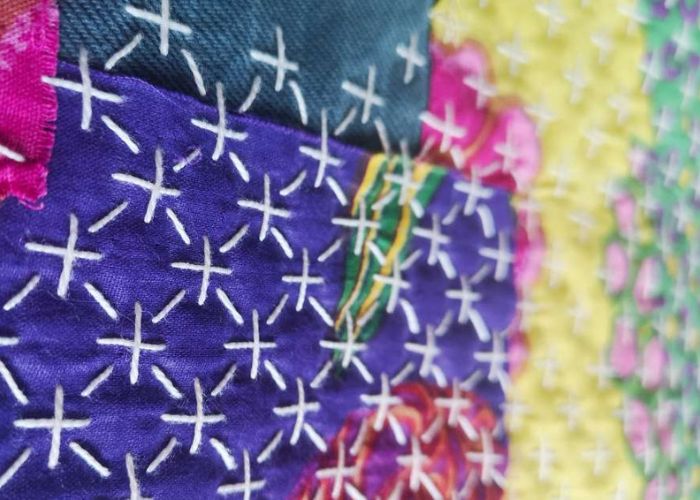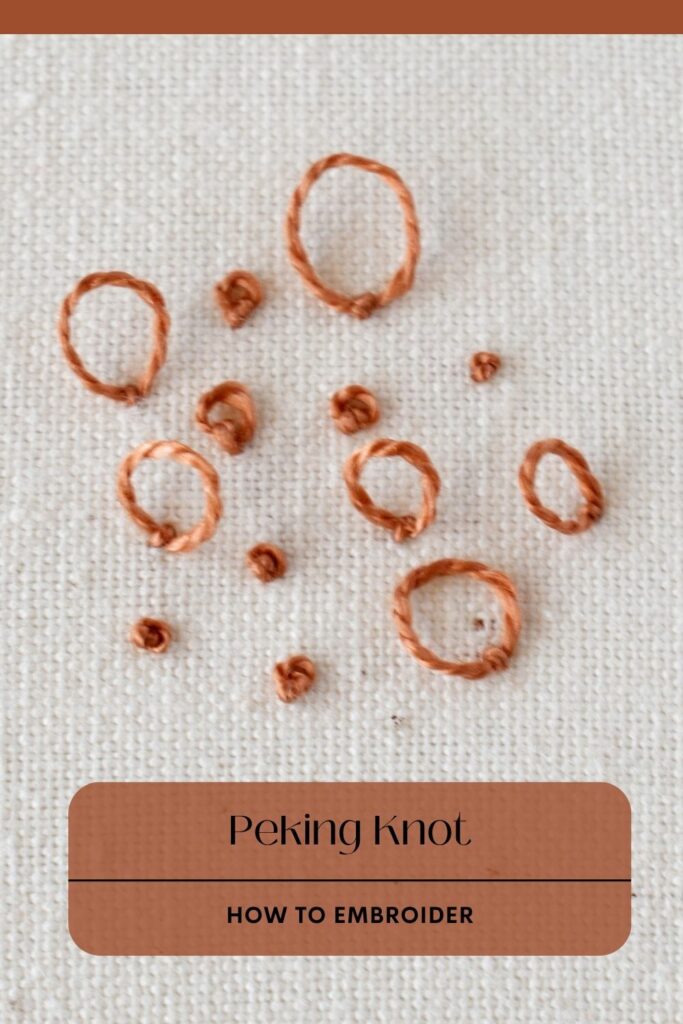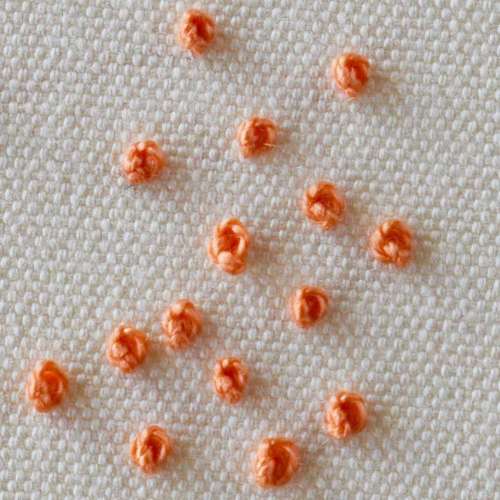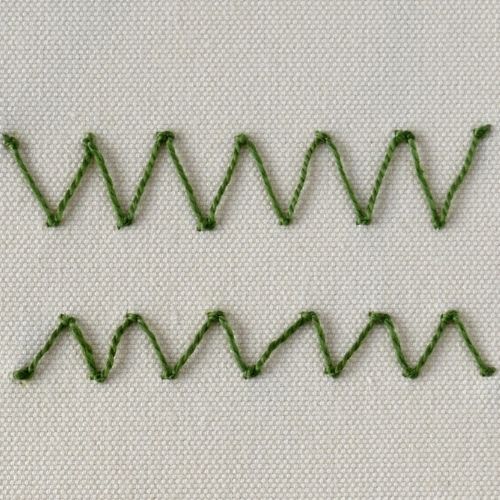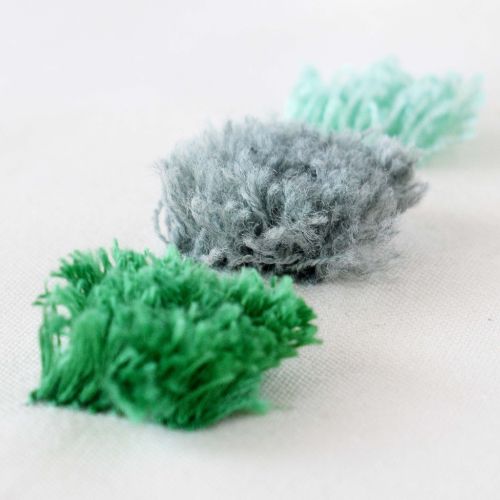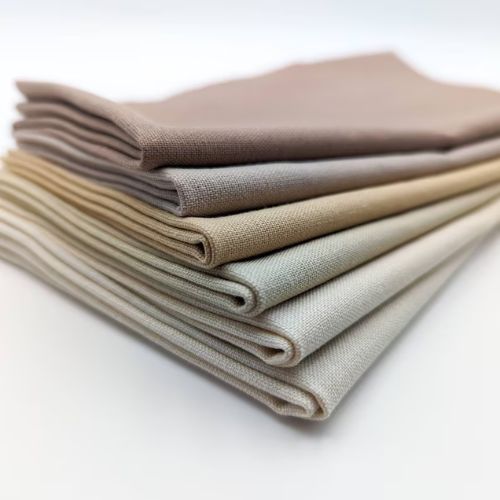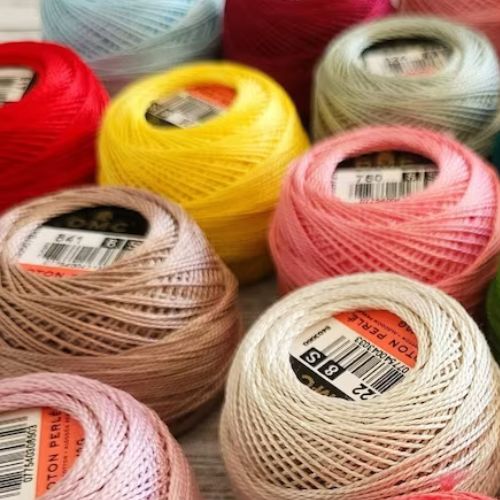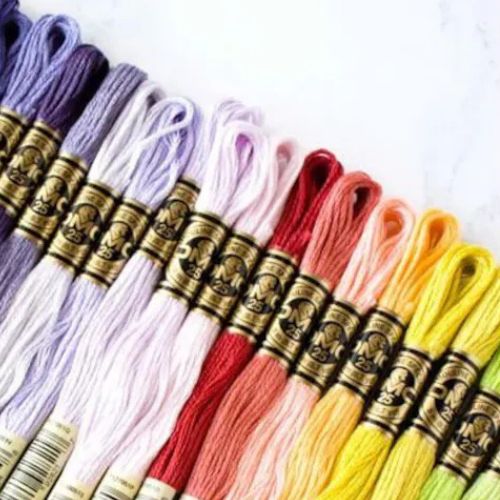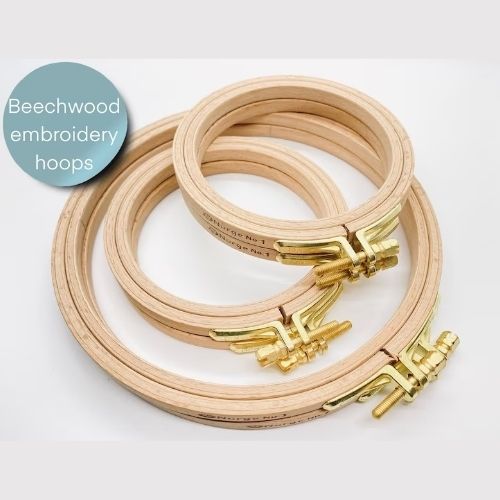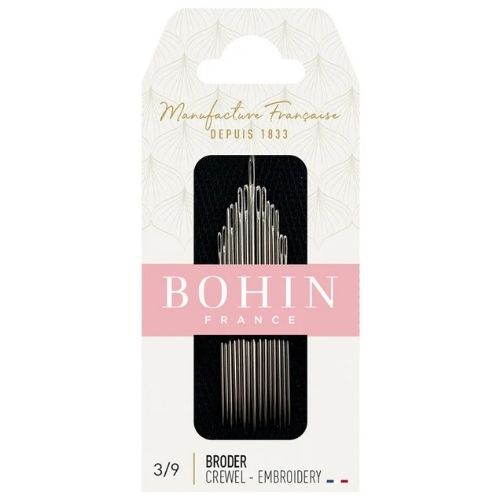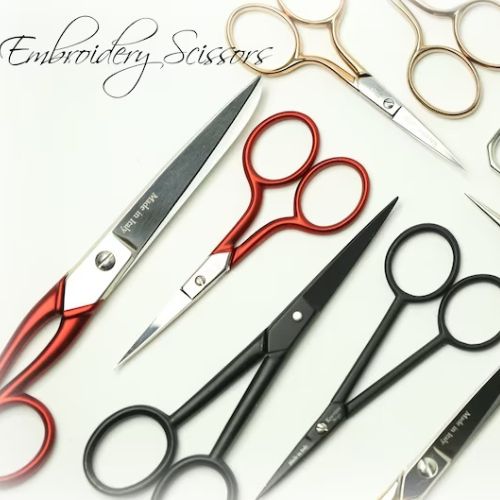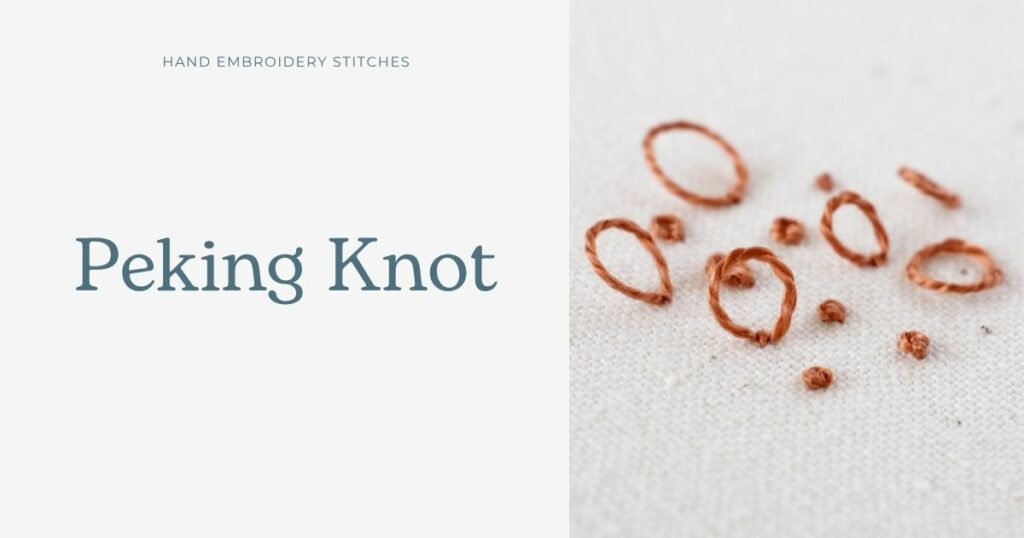
Peking Knot
Peking Knot is a hand embroidery stitch that comes from traditional Chinese embroidery and belongs to the family of knot stitches (like French knots or Colonial knots).
The embroidery technique of the Peking Knot allows to make knots or loops on the surface of the fabric. You can vary the size of the knot or loop by adjusting the loop while stitching.
On the reverse side of the fabric, this technique creates only jumping threads between the stitches, as most of the thread remains on the front side of the material.
Other names of the Peking Knot
This hand embroidery technique is also known as the Chinese Knot, Forbidden Stitch, Blind Knot, and Peking Stitch.
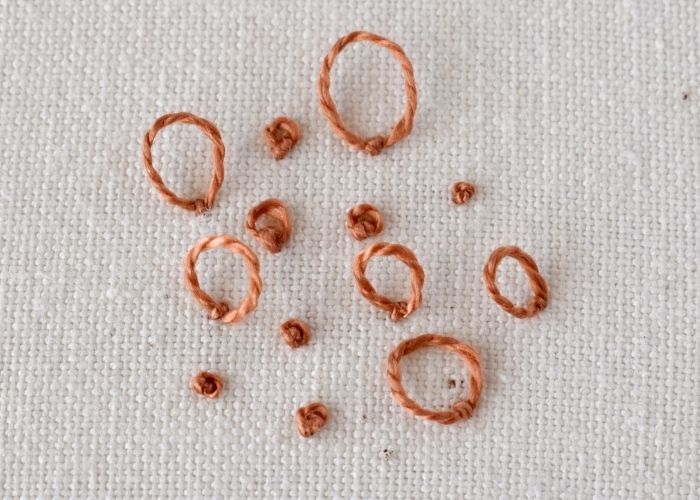
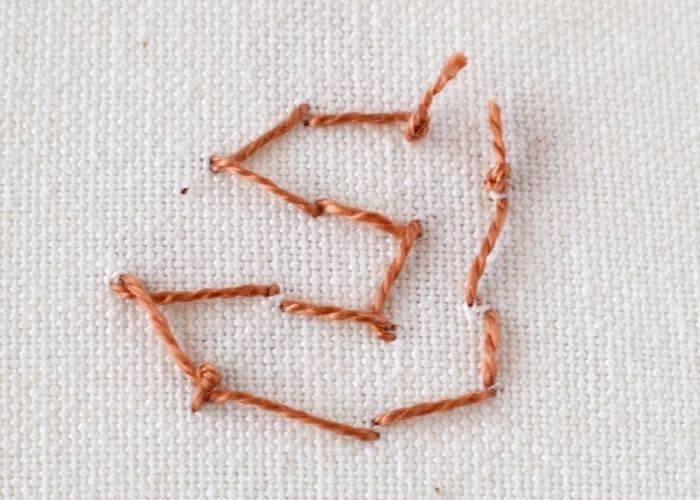
Applications of the Chinese Knot
In traditional Chinese textile art, the Peking Knot is a filling stitch. Rows of same-sized knots, or sometimes loops, embroidered with a silk thread, create a uniform textural filling.
In modern surface embroidery, it is also used as a decorative detached stitch. In the botanical designs, you can depict berries or flowers with these knots. Besides that, you can use Blind Knots of various sizes to add dimension and depth to your embroidery design.
More stitches from the knot stitch family
Learn how to embroider Peking Knot stitch
Follow the step-by-step tutorial with detailed photos below, and you will learn the Peking Knot quickly. If you are a visual learner, watch a video lesson in the tutorial or on the Practical Embroidery YouTube channel to learn this hand embroidery stitch faster.
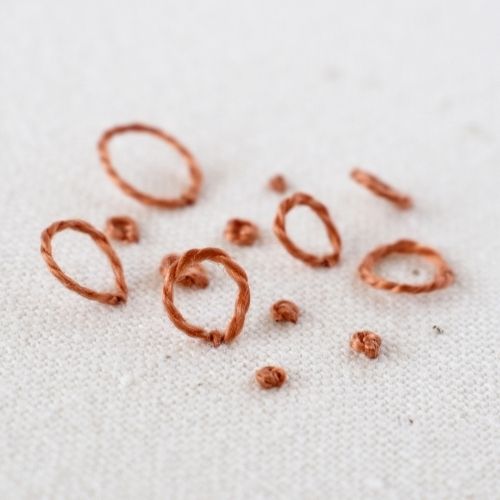
How to embroider Peking Knot
Step-by-step hand embroidery tutorial
1. Take the needle to the surface and pull all the thread through. Twist the thread and form the loop.
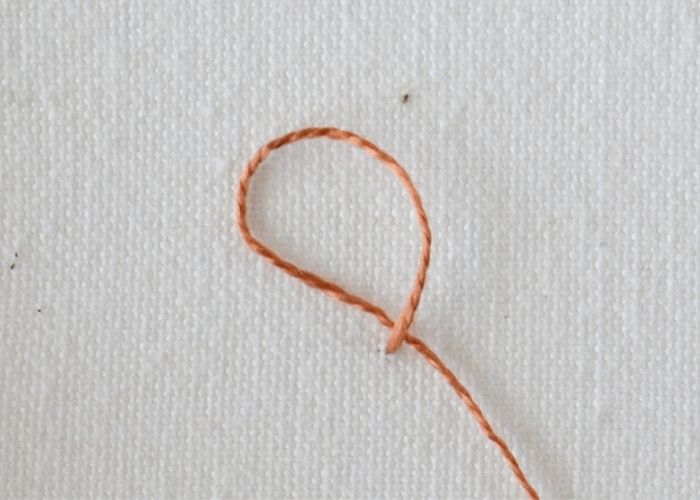
2. Push the needle to the fabric inside the loop, very close to the starting point (but not in the same hole).
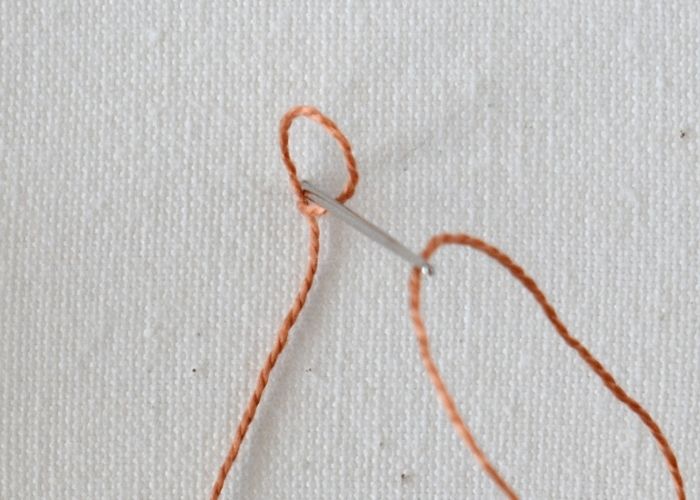
3. Pull the thread to tighten the loop around the needle. This moment will define the size of the knot or the loop.
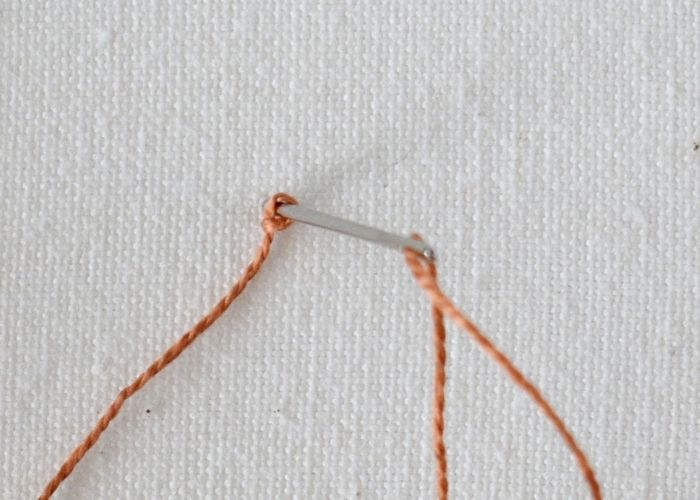
4. To make a looped Peking Knot, leave the loop of the working thread opened and adjust the size as you pull the thread to the back. You can press the loop with a finger to make sure you do not pull too tight.
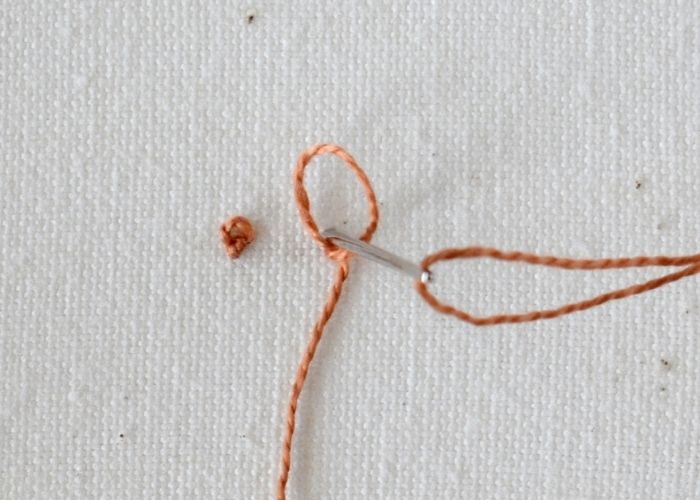
5. Repeat the steps to make as many knots or loops as your design requires.
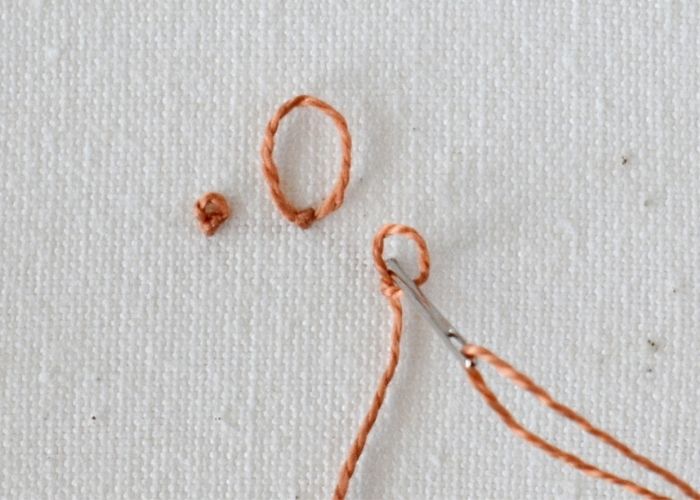
Video tutorial
Tools and materials I used for this sampler
Disclaimer. To cover the cost of creating free embroidery patterns and video tutorials for this blog, I do sometimes link to products. Please assume these links are affiliate links. If you choose to buy through my links then THANK YOU – it will make it possible for me to keep doing this.
What’s next?
If you’re in the mood to explore more hand embroidery stitches, check out the Stitches and Techniques page for the list of other fantastic stitches available on my blog. From timeless classics to modern twists, a whole world of stitches is waiting for you to explore and master. So, grab your hoop and needle, and let’s stitch our way to creative bliss!
Don’t miss a thing!
Follow me on YouTube, Instagram, Facebook, Flipboard, and Pinterest. Or why not subscribe to Practical Embroidery newsletter and get embroidery tips straight to your inbox every few weeks?
Need More Guidance?
The top 10 hand embroidery stitches to learn is a free online course created for beginners.
